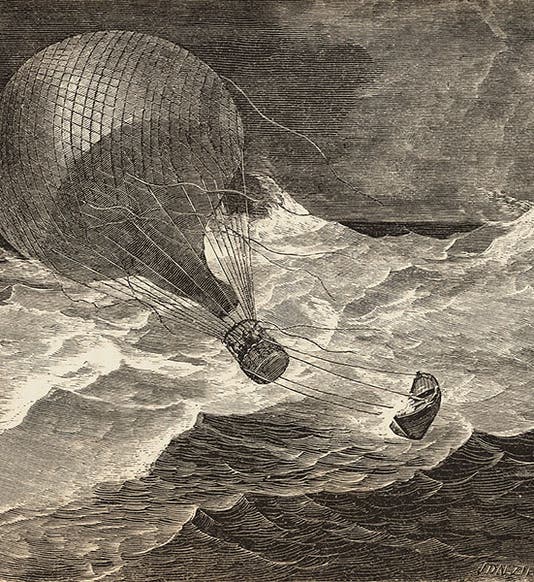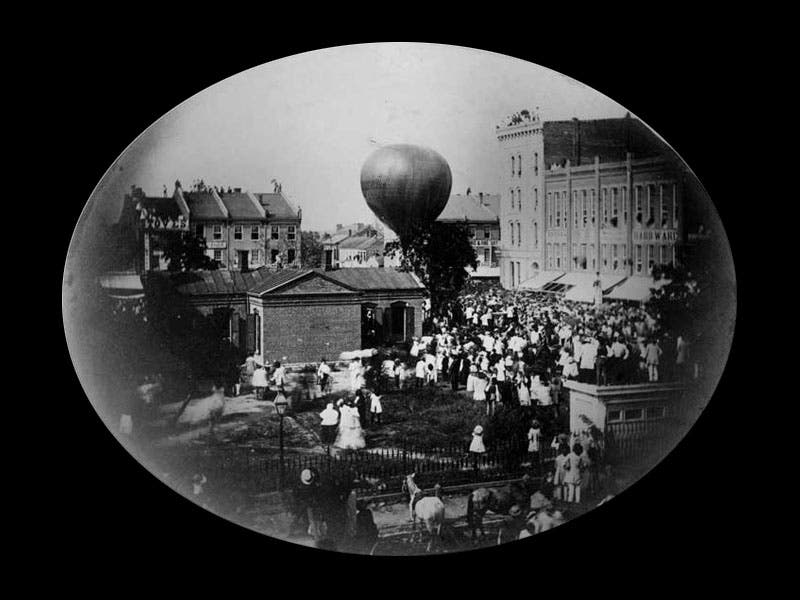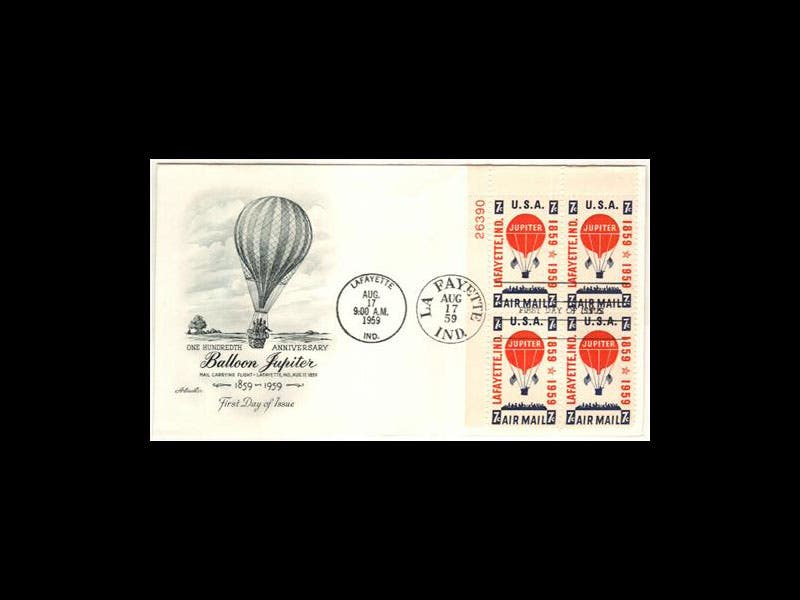Scientist of the Day - John Wise
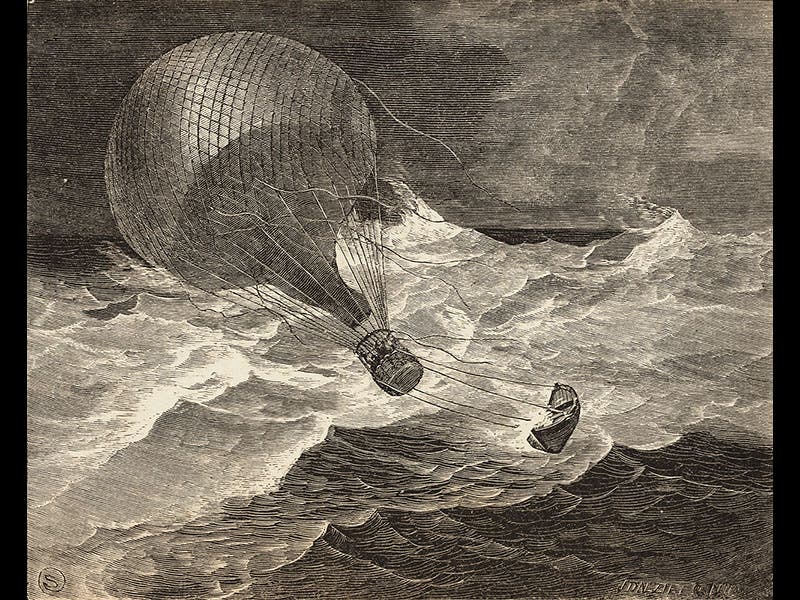

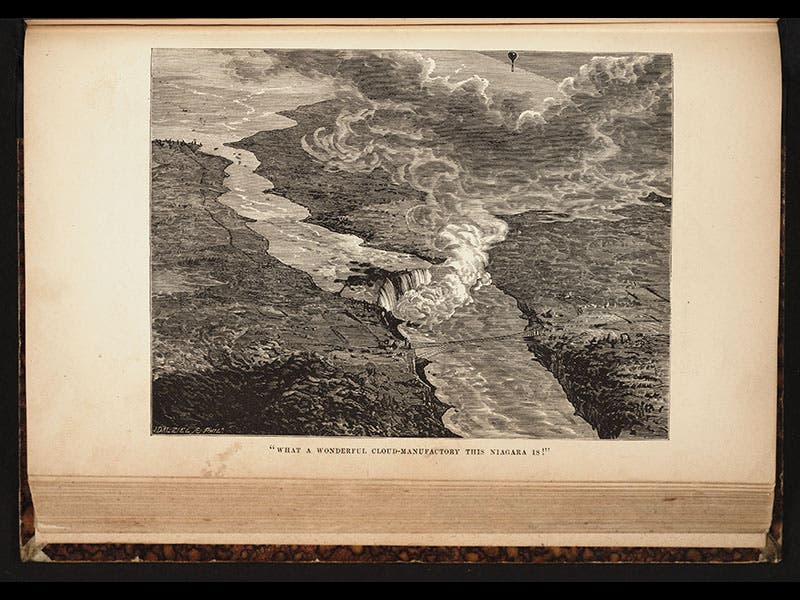

John Wise, an American balloonist, was born Feb. 24, 1808. Wise, who came from Lancaster, Penn., made his first ascent in 1835, and he added well over 400 subsequent flights during a 40-year career, if one can call ballooning a career. One of his early ascents (1838) was notable for his discovery, made under extreme circumstances at 13,000 feet, that an exploded balloon will collapse to form a parachute and allow for a safe if rather rapid descent. This conversion from balloon to parachute was only possible because the early balloons were surrounded with an enclosing network of rope, to keep the balloon from expanding at altitude, but which in this case served to confine and retain the punctured balloon, which air pressure formed into an umbrella shape (second image).
Wise also made a trip from St. Louis to New York in 1859, which he self-proclaimed the most amazing balloon voyage of all time (this in his book, Through the Air: a Narrative of Forty Years’ Experience as an Aeronaut, 1873, which we have in our collections). He did make a drawing of Niagara Falls from the air that is rather impressive (third image). During this trip, his balloon almost landed in Lake Ontario, which made for an even more dramatic pictorial record (first image).
Wise's other claim to fame is that he made the nation's first airmail delivery for the US Postal Service. This was on Aug. 17, 1859, when he took off from Lafayette, Ind., with some 120 letters and a few flyers, headed for either New York or Philadelphia (fourth image). His balloon was called The Jupiter, and the feat was commemorated, on the centennial of the flight, with a postage stamp, the 7¢ Jupiter of 1959 (fifth image). Purdue University traces the origin of its School of Aeronautics to the ascent of the Jupiter, even though the University wasn't even founded until 10 years later (and the School of Aeronautics not until 1945). What is often lost in all this hoopla is that the Jupiter made it approximately 2% of the way to New York, coming down in a field just 25 miles east of Lafayette (sixth image). Wise hardly mentions his role as postal carrier in his book, commenting only that when he realized that the journey east was about to end, he dropped the letters to the ground via a handmade parachute. No wonder only one letter survived; it is in the Smithsonian Institution.
Wise was not mentioned on the Jupiter stamp, nor is there much else in the way of grateful commemoration for his ballooning feats. The only monument we could find is in his home town of Lancaster, and we are not sure a great deal of money or thought went into its design (seventh image).
Dr. William B. Ashworth, Jr., Consultant for the History of Science, Linda Hall Library and Associate Professor, Department of History, University of Missouri-Kansas City

